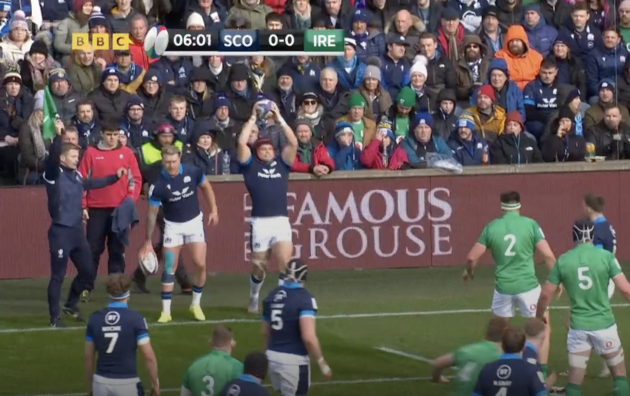Caelan Doris went off hurt in the aftermath too
It looks like Ireland had scored the opening try of their Six Nations match at Murrayfield after a Scotland quick throw over the top was taken by Caelan Doris and the Irish worked it over the line. However, sadly for the Irish, it was disallowed.
Why was the Ireland try disallowed?
Well as former referee Nigel Owens explained on the BBC coverage, the fact Scotland didn’t use the original ball, George Turner couldn’t actually throw quickly.
What does that mean, though? Well, here are more details…
Quick throw with old ball
When a ball goes into touch, in order for the team throwing in to take the ‘lineout’ quickly – i.e. throwing the ball back onto the park without two lines forming – the ball mustn’t be touched by anyone but the player who hs to throw it, and for that reason the ball thrown back into play has to be the ball that was kicked off.
As with the Scotland example, they could not throw the ball back over the top quickly because full-back Stuart Hogg had the original ball while hooker George Turner took a ‘new’ ball from someone on the sidelines.

Caelan Doris after claiming the quick throw (Getty Images)
However, in this case one of the problems Ireland fans have is that – should Scotland get to benefit from the fact it wasn’t legal to quick throw the new ball, if it was them who did it, and it led to an Ireland score?
As Ireland’s Peter O’Mahony said – caught on the ref mic – at the time: “If they want to play with a new play that’s their problem. We will play with it all day.”
And to add insult to injury, Doris would end up going off injured, with what was potentially an injury sustained as he came down hard after going up and claiming the long throw.
Download the digital edition of Rugby World straight to your tablet or subscribe to the print edition to get the magazine delivered to your door.
Follow Rugby World on Facebook, Instagram and Twitter.





